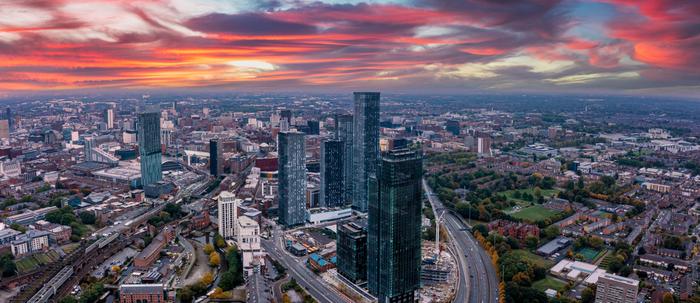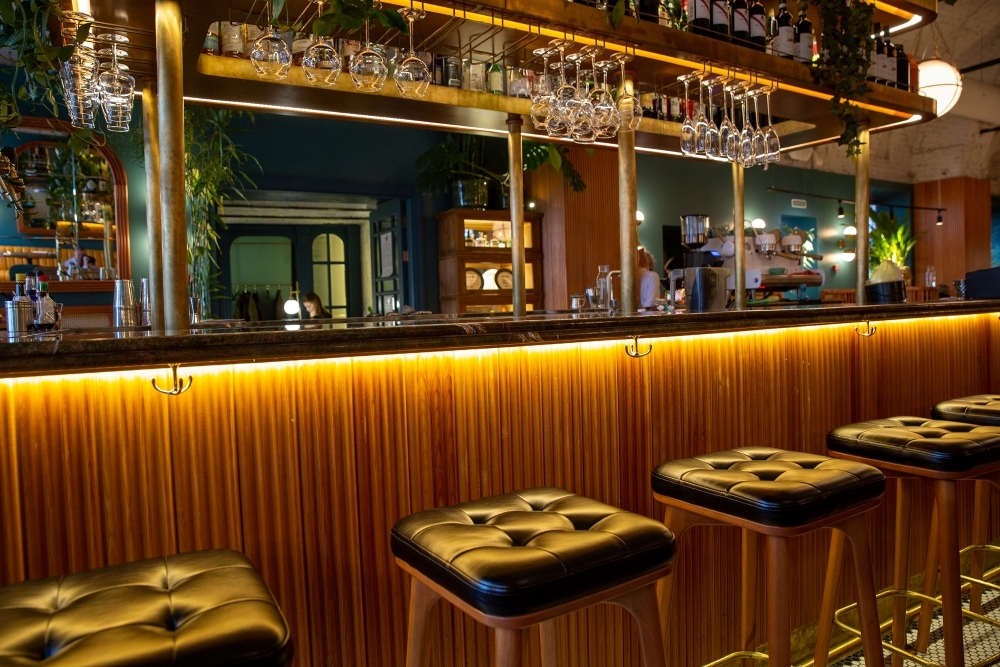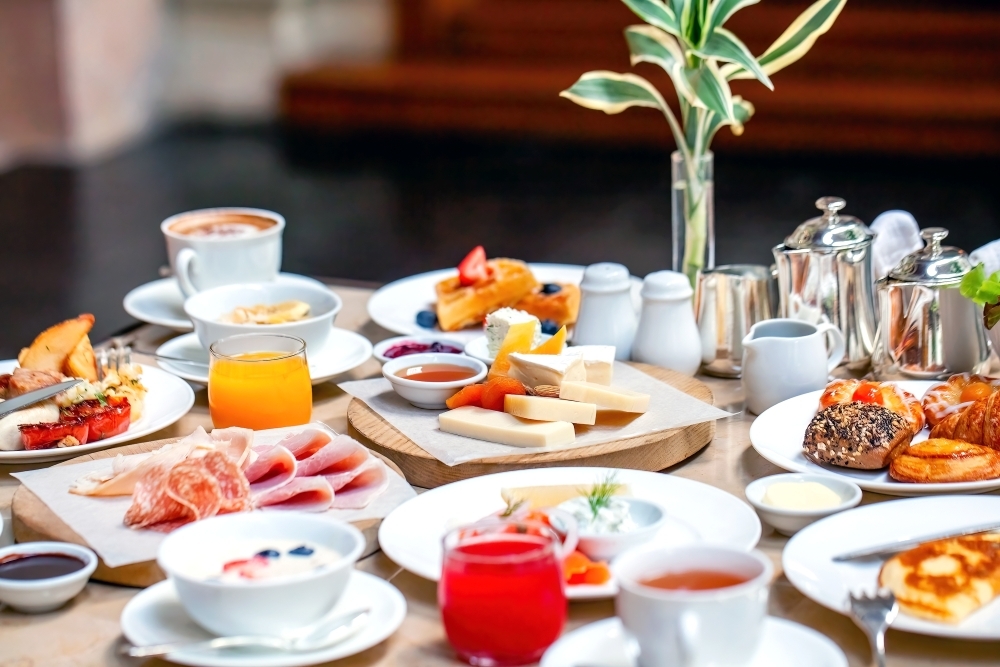Over the last 20 years, Manchester has become an incredibly attractive location for young families and professionals to set home base in. This is a city that is increasingly becoming the gold standard for 21st-century living with a clear understanding of what is needed to align with the lifestyles, expectations, and requirements of modern living. A developing transport infrastructure is continually spreading further from the city centre into the suburbs and opening up more options for new areas to thrive. It has also become a new hub for creative employment with the Media City complex housing some of the country’s biggest broadcasters and independent production companies, alongside thousands of tech start-ups and creators. For many, Manchester now represents a viable alternative to London for some of the very best neighbourhoods in England to live and work in. However, the pace at which the city has progressed can often make the choice of where to look for a new home a challenge for those who are not familiar with Manchester’s many regions, areas, and boroughs.
The Best Areas to Live in Manchester
Our guide to the best places to live in Manchester provides some essential local knowledge to help you overcome that challenge and start your own journey of exploration in this incredible city.
Ancoats is one the finest examples of urban transformation and regeneration anywhere in the world over the last decade. This area was the heart of an industrialised Manchester for over 200 years with hundreds of mills, workshops, and warehouses lining the cobbled streets and canal-side. For the later part of the 20th Century, it fell into almost complete disrepair and remained empty and unloved. Now, Ancoats is a bustling urban village that is home to thousands of young professionals, just a 10-minute walk from Manchester’s Piccadilly station and the city centre.
It offers modern living in surroundings that recognise Manchester’s rich heritage with many of the mills now providing stunning luxury apartments. Attractions here such as The Hallè at St Michael’s and The Hallè at St. Peter’s are exquisite arts and music homes for one of the world’s most famous orchestras set in the buildings of old churches. Ancoats even has the prestigious honour of being home to Manchester’s first-ever Michelin-starred restaurant, Mana. This is simply the coolest place to be in the city.
Chorlton remains one of the most sought-after locations in Greater Manchester due to its recent history of building a wonderful community around great schools, vibrant nightlife, and a connection to many open, green spaces. The exclusive Chorltonville estate here is a warren of attractive early 20th-century houses in a purpose-built garden suburb with the river Mersey and Chorlton meadows just a lazy stroll from their front doors.
The restaurants and bars of Beech Road serve the town with some fantastic options including the Horse and Jockey pub that sits on Chorlton Green and the amazing Bar San Juan that is regularly voted Manchester’s number one place to eat in annual lists. Chorlton also offers one the best foundations for connections to Manchester city centre and beyond with a Metrolink station and great links to the motorway. With a yearly arts festival and regular pop-up music events for adults and children, it often feels like a countryside village experience, all within five miles of the city centre.
Didsbury was in many ways the original South Manchester suburb that catered to the affluent families of merchants and industrialists that made the city into a global economic force hundreds of years ago. As a result, the grand Victorian & Georgian architecture of the homes available and carefully curated open spaces are some of the finest that you will find in all of the north-west of England.
The verdant landscape surrounding the public park and botanical gardens of Fletcher Moss are a particular highlight, donated to the people of Didsbury in 1915 by their namesake, a local philanthropist. It became such an important area for wildlife in England that it even led to the creation of the Royal Society for the Protection of Birds. The trendy night spots of Burton Road in West Didsbury have become a huge draw for Mancunian revellers too, with places such as the innovative little dish delight Volta steadily making itself an institution in this neighbourhood.
The Northern Quarter of Manchester City was one of the first to offer residential city living during the late 1980s and early 1990s. It was here that bohemians, artists, musicians, and all manner of creative minds came to live and work in some of the empty buildings that stood at the city centre’s edge. They quickly capitalised on the fascinating history of the neighbourhood to build an eclectic community that was innovative, welcoming, and supportive of new ideas and businesses. The legendary Affleck’s Palace market which was so important to Manchester becoming a global cultural force in the early 1990s remains a pilgrimage for many with its portraits and poems from brilliant writers such as Lemn Sissay adorning the walls and pavements.
The shops of Tib St that once sold exotic animals in Victorian times are now home to some of Manchester’s best bars, with the buildings themselves providing clues to this history through the beautiful ceramic bird statues that are found on window sills. The Northern Quarter loft apartments are now some of the most impressive real estate in all of the city.
Castlefield is a unique neighbourhood of Manchester that exudes a heritage dating even farther back than the famous titans of industry that made the city famous. It is an inner-city conservation area with the ruins of the original fort of Mamucium, officially classed as a Scheduled Ancient Monument, that was home to Roman troops almost 2000 years ago. The fort site now also makes up part of the iconic Castlefield Bowl that hosts open air events in the summer from some of the biggest names in music and comedy.
The awe-inspiring architecture of the railway bridges that remain from the Victorian area look over this ancient settlement and provides a connection to modernity with the bars, restaurants, and residences that surround it. The National Trust Castlefield Viaduct ‘Sky Garden’ has recently taken over part of this area to create a remarkable oasis in the middle of the city. This is definitely a cultural historian’s dream location to live and work in.
Manchester and its suburbs represent a way of living that understands its own place in the past and recognises the opportunities for the future. Each of these areas has its own personality, sense of community, and experience whilst sharing something very Mancunian amongst them. Taking journeys of exploration around them all may help you decide on where you feel suits you and your family best, and is also a great way to spend some time in one of England’s greatest cities.





